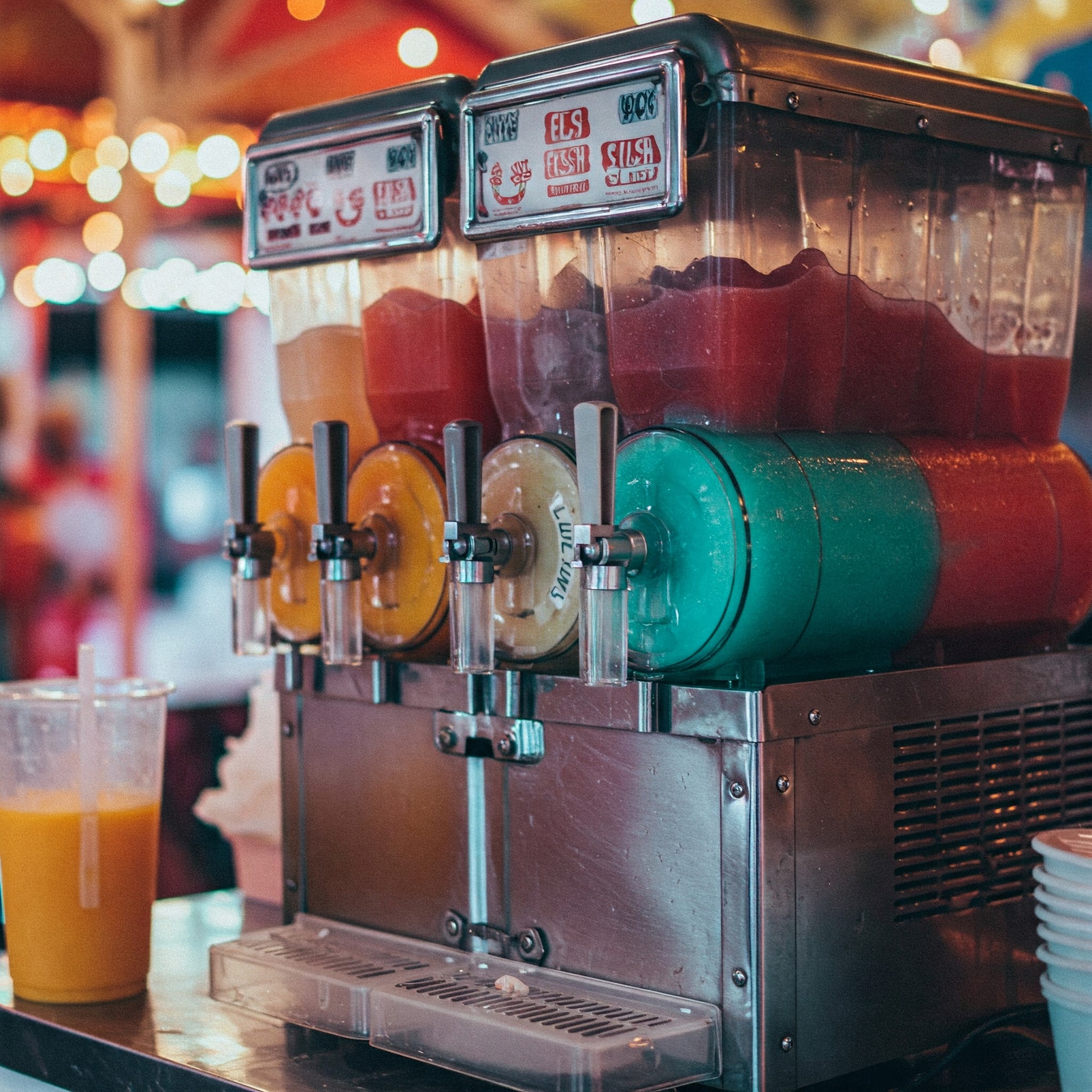Slush Machines: The Ultimate Guide to Making Frozen Beverages
Slush machines are essential appliances for creating refreshing, ice-cold slush drinks in cafés, restaurants, convenience stores, and event venues. These machines mix and freeze beverages to form a smooth, semi-frozen texture, perfect for serving slushies, frozen cocktails, and iced coffee drinks.
Whether you need a compact slush machine for a small café or a high-capacity model for commercial use, choosing the right slush machine ensures consistent texture, fast freezing, and efficient operation.
What Are Slush Machines?
Slush machines are frozen beverage dispensers that chill and stir liquid mixtures while partially freezing them to create a smooth, icy consistency. These machines use a refrigeration system and rotating paddles to prevent ice crystals from forming, ensuring a perfect slushy texture.
They are commonly used in:
- Cafés and restaurants – To serve frozen coffee, frappés, and iced drinks.
- Convenience stores – For self-serve slushies and frozen fruit drinks.
- Bars and nightclubs – To create frozen cocktails like margaritas and daiquiris.
- Catering businesses – For serving large crowds at events and parties.
- Home kitchens – For making fun and refreshing slush drinks.
Types of Slush Machines
1. Single-Tank Slush Machines
- Description: Machines with one mixing tank for a single-flavor slush.
- Best For: Small cafés, home use, and specialty drink shops.
- Example Items: Frozen lemonade, fruit slush, iced tea slush.
- Advantages:
- Space-saving design.
- Easy to operate and maintain.
- Ideal for limited menu options.
2. Double and Multi-Tank Slush Machines
- Description: Machines with two or more mixing tanks for serving multiple flavors at once.
- Best For: High-traffic venues like convenience stores, buffets, and fast-food chains.
- Example Items: Cola slush, fruit punch, frozen coffee, and mixed flavors.
- Advantages:
- Allows customers to choose from multiple flavors.
- Higher serving capacity for busy locations.
- Great for mixing different slush drinks.
3. Gravity-Fed Slush Machines
- Description: Uses gravity to dispense the slush mix without internal pumps.
- Best For: Small businesses, self-serve stations, and home users.
- Example Items: Classic slush drinks, juice-based frozen drinks.
- Advantages:
- Simple design with fewer mechanical parts.
- Easier to clean and maintain.
- Lower initial cost compared to pressurized machines.
4. Pressurized Slush Machines
- Description: Uses air pressure pumps to quickly freeze and dispense slush drinks.
- Best For: High-demand locations like theme parks, movie theaters, and stadiums.
- Example Items: Frozen cocktails, soda-based slush drinks, dairy slushes.
- Advantages:
- Faster freezing time and higher production rates.
- Creates a smoother and more consistent slush texture.
- Suitable for heavy-duty commercial use.
5. Home Slush Machines
- Description: Compact and user-friendly machines for making slush drinks at home.
- Best For: Families, parties, and home entertainment.
- Example Items: Fruit slush, iced coffee, DIY frozen cocktails.
- Advantages:
- Easy to use and clean.
- Affordable for personal use.
- Allows for customized recipes with fresh ingredients.
Key Features of Slush Machines
- Capacity – Ranges from small (1-2 liters) to large (10+ liters per tank) for different needs.
- Freezing Speed – Some models freeze drinks in as little as 15 minutes, while others take 30-45 minutes.
- Multiple Tanks – Available in single, double, or triple-tank configurations for serving different flavors.
- Cooling System – Some models feature fast-freeze settings for quicker service.
- Dispensing Method – Gravity-fed vs. pressurized machines affect serving speed and texture.
- Energy Efficiency – Many modern machines use eco-friendly refrigeration to reduce power consumption.
Applications of Slush Machines
- Cafés and Coffee Shops – For frozen coffee drinks and iced teas.
- Restaurants and Fast Food Chains – To offer refreshing slush drinks with meals.
- Bars and Nightclubs – For serving frozen cocktails and mixed drinks.
- Convenience Stores and Gas Stations – For self-serve slushies.
- Event Catering and Festivals – For high-demand frozen drink service.
- Home Use – For personal enjoyment and parties.
Benefits of Slush Machines
- Increases Profits – Slush drinks have high-profit margins and attract more customers.
- Fast and Efficient – Quickly produces large volumes of slush for busy businesses.
- Versatile – Can be used to make slushies, frozen coffee, cocktails, and more.
- Consistent Quality – Maintains smooth texture and perfect freezing levels.
- Low Maintenance – Many models come with easy-to-clean parts and automatic cleaning cycles.
Maintenance Tips for Slush Machines
Daily Maintenance
- Clean the dispensing nozzles to prevent clogging.
- Wipe down the tanks and exterior surfaces.
- Check the temperature settings for optimal freezing.
Weekly Maintenance
- Empty and deep clean the mixing tanks.
- Inspect seals and gaskets for leaks.
- Lubricate moving parts if needed.
Monthly Maintenance
- Sanitize all internal components.
- Clean condenser coils to maintain energy efficiency.
- Test for any operational issues, such as slow freezing times.
Troubleshooting Common Issues
1. Slush is Too Runny
- Cause: Mixture ratio is incorrect or temperature is too high.
- Solution: Adjust syrup-to-water ratio and lower the freezing temperature.
2. Slush is Too Thick or Freezing Solid
- Cause: Temperature is too low or syrup is too concentrated.
- Solution: Raise the temperature slightly and check the mix consistency.
3. Machine is Not Freezing Properly
- Cause: Dirty condenser coils or low refrigerant.
- Solution: Clean the coils and check the refrigerant levels.
4. Slow Dispensing or Blocked Nozzle
- Cause: Ice buildup in the spout.
- Solution: Flush warm water through the nozzle and clean it regularly.
5. Machine is Making Excessive Noise
- Cause: Loose components or worn-out motor.
- Solution: Tighten screws and replace damaged parts.
Choosing the Right Slush Machine
Factors to Consider:
- Production Volume – Small shops can use single-tank machines, while busy locations need multi-tank models.
- Speed of Freezing – Pressurized machines freeze faster than gravity-fed models.
- Space Availability – Choose between countertop and freestanding units based on available space.
- Energy Efficiency – Look for low-energy compressors to reduce operating costs.
- Ease of Cleaning – Some machines offer automatic cleaning cycles for convenience.
- Budget – Home slush machines are affordable, while commercial machines require higher investment.


